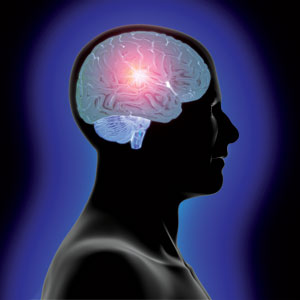.

|
|
Mental Health: Child abuse impacts brain
by
SCOTT MENDELSON -- for the News-Review
The effects of childhood sexual and physical abuse last a lifetime. Abused children grow up to be adults who are prone to depression, anxiety, substance abuse and other psychiatric disorders. They are more prone to suicide. However, in recent years we have learned that abuse does more than wound self-esteem and break the spirit. It damages the very substance of the brain and how it functions.
A major way by which childhood abuse disrupts normal brain activity is by diminishing its capacity to handle stress. Stress is more than the worry and distress we experience when the circumstances of life push us beyond our limits. The body's response to stress is a complex biological mechanism.
When the brain senses that the body is being taxed beyond its usual capacity, it initiates the stress response by releasing a substance called corticotrophin releasing hormone, or CRH. CRH stimulates the pituitary gland to release a substance that, in turn, triggers the release of the stress hormone, cortisol, from the adrenal glands. Cortisol marshals the body's resources to provide the extra energy and endurance to meet the demands being placed upon it. |
Once, this might have been escaping an angry mastodon. Today, it would more likely be getting used to a new job, a nasty divorce or recovering from surgery.
The stress-induced switch into physiological overdrive is designed to be brief. In fact, among the many things that cortisol does in the body, one of the most important is to feed back to the brain and start to shut the stress response down. Cortisol does this by binding to specific receptors in the brain. Cortisol fits the receptor, like a key in a lock, and turns off the response. One of the problems in those who have suffered severe childhood abuse is that the brain's turn-off switch for the stress response is disabled.
Instructions for how each cell in the body operates are in the DNA of those cells. Although every cell in the body has an identical copy of DNA, these cells can be very different. One means by which a cell becomes a skin cell instead of a liver or muscle cell is that certain genes in its DNA are turned off by the addition of a molecule called a methyl group. The addition of methyl groups to specific sections of DNA is an essential process in embryological development. It may also be involved in learning and other adaptive brain processes throughout life. However, DNA methylation can be abnormal.
A study published in 2009 in the journal “Nature” revealed part of the reason why adults who were abused as children have abnormal stress responses. The grim details of the study included comparisons of the brains of individuals who had committed suicide versus those who had died natural deaths. Among those who had committed suicide were some who had suffered severe childhood abuse and others who had not. It was found that among those who had suffered abuse, there were fewer of the special cortisol receptors in the brain that allow cortisol to turn off the stress response. It was further found that the section of DNA responsible for maintaining adequate numbers of these receptors had been methylated. They were no longer in full operation.
When the stress response won't shut off and cortisol levels remain high in the brain, bad things happen. Whereas bursts of cortisol help bolster the brain's supply of glucose and chemical messengers, sustained high levels of cortisol cause damage. Cortisol diminishes the brain's response to the chemical messenger serotonin while it enhances the response to norepinephrine. Persisting high levels of cortisol also decrease levels of brain-derived neurotrophic factor, a substance that is necessary to maintain and replenish neurons in the brain. These and other changes alter mood, disturb sleep, heighten anxiety and cause irritability. Consequently, the individual becomes more prone to major depression, post-traumatic stress disorder, generalized anxiety and other psychiatric disorders.
The emotional upheavals suffered by adults who were abused as children continue to wreak havoc on jobs and schooling. They lead to substance abuse. They devastate marriages. Thus, the innocent victims of child abuse continue to suffer as adults. Perhaps the most tragic effect of child abuse is that adults who were abused as children, either physically, emotionally, or sexually, have a higher than expected risk of becoming abusers themselves. Thus, the cycle of abuse and suffering perpetuates itself.
We as a society must pursue every means to end this social cancer that reaches deep into the brains of children and across generations. The problem must be addressed by government and in schools, in churches and synagogues and by community organizations. Doctors and other health care providers must redouble their efforts to spot child abuse and give the victims the help they need. Though it may be difficult to have sympathy for those who abuse children, they must be helped as well. Many of them were victims as well. If nothing else, treating the perpetrators may prevent creation of still more victims.
Scott D. Mendelson of Roseburg is lead psychiatrist at the VA Roseburg Healthcare System. He can be reached at s_mendelson@msn.com. Questions cannot be answered directly, but may serve as subject matter for future columns.
|